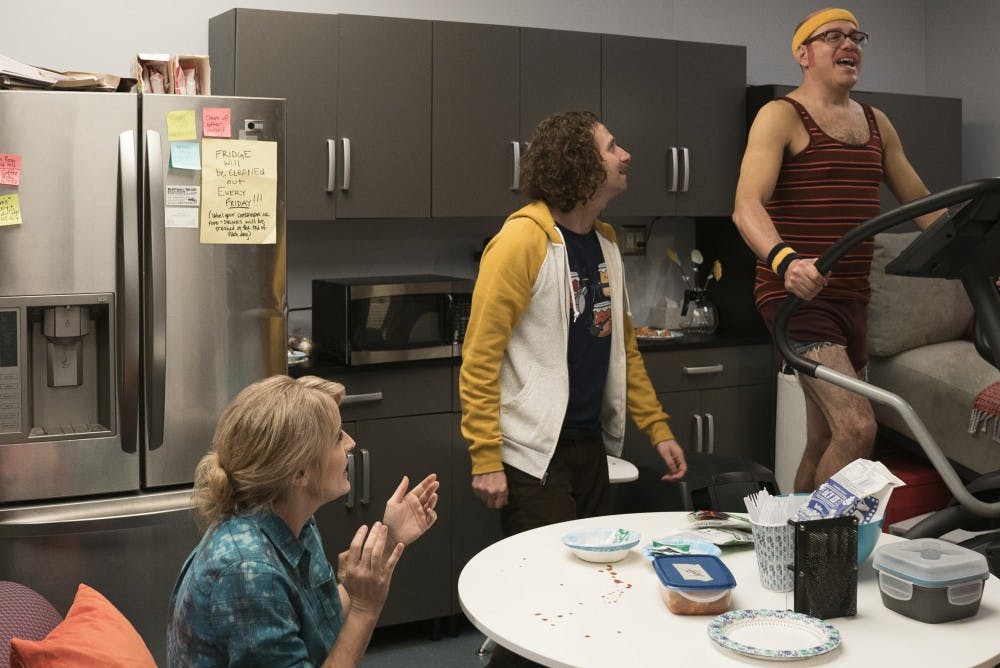The sitcom is one of the most treasured forms of American media, often defining a generation with a specific sense of humor and creating a common language among its viewers. The “situational comedy” centers on a set of characters in the same setting as they go about their lives—they enter new relationships, lose others, and have to make grand life choices before our very eyes. Perhaps one of the most influential shows for the current generation has been Friends, which, while premiering in the 1990s, has enjoyed a revival among an audience of young adults with time to kill.
The sitcom has such an impressive audience due to its bingeable quality. While prior to the creation of Netflix and other streaming services, the “bingeability” of a television show had no influence over its popularity, Netflix allowed an audience to sit down and watch TV normally broken up into distinct sections or spread throughout the day on daytime television. Much of Friends’s popularity is due to how easy it is to watch it straight through. Sitcoms are about the same set of characters on different days, dealing with different issues but always coming back together as a group in a familiar setting. There's usually no massive advancement in plot from episode to episode, and such major turning points often come at season finales for dramatic effect.

However, the exact form of the sitcom is changing. Friends and How I Met Your Mother, while still frequently watched and binged today, were clearly made in the 1990s and 2000s. They are marked by laugh tracks and outdated jokes. However, the leads of Friends and How I Met Your Mother’s exhibit an impressive amount of change throughout the storyline, often entering relationships with each other and then ending them or having to decide about their careers or children. These characters, fundamentally, are altering themselves and growing—so when the show ends, the audience is able to look back at the character's journey.
Yet where does that leave the current crop of sitcoms? Two of the more popular modern sitcoms are FX’s It’s Always Sunny in Philadelphia and Netflix’s seasons of Arrested Development. From the get–go, these two television shows use the form differently: they no longer have laugh tracks, their characters are not supposed to be reflections of an audience, and how their lives will shake out is never the worry of viewers. It’s Always Sunny in Philadelphia is about five dysfunctional people working in a bar together—a location which acts as their “home base” and the foundation for shenanigans—and Arrested Development focuses on an incompetent wealthy family that has fallen from riches. Both shows are about human beings who we are not supposed to look up to, and, in fact, we are often supposed to laugh at their expense for the situations they have gotten themselves into.

To the point of character development, both shows make an explicit point to not allow their characters to grow or change. Arrested Development is focused on—just as its title indicates—a family stuck in a state of stagnancy. It’s Always Sunny never allows its characters to grow because, fundamentally, they are terrible people. The emotional investment of an audience is almost discouraged by the shows due to the utter lack of evolution in every character.
An interesting issue with these sitcoms is that they are still on the air. It’s Always Sunny is slated through an impressive 14th season—making it tied for the longest running sitcom in America—and has indicated that it may continue past that. Arrested Development, after getting a remixed fourth season, just released the second half of its fifth season in March of 2019. However, do audiences even want to continue watching?
The peaks in popularity of these shows are likely behind them. Arrested Development had quite a bit of buzz in 2012 when the public was rediscovering it following its cancellation by Fox in 2006, which in itself created enough uproar for the show to be picked up by Netflix for a fourth season. However, following the fourth season in 2013, general opinion of the show dropped and the season was generally considered a failure for its character–based episode format. On the other hand, It’s Always Sunny made no grave mistake, but its popularity has simply petered out after it was rediscovered by younger audiences around 2015.

Both shows went through phases where fans insisted and rallied for extensions and more seasons. However, asking for new seasons of these sitcoms is very different than asking for more seasons of a show like Friends, which is about characters changing. While a season finale of Friends may end on some grand cliffhanger, It’s Always Sunny wouldn't do that, since it's characters aren't meant to undergo dramatic changes.
The question becomes, then, how long can we watch characters never develop in a comedic format until we grow bored? How long can It’s Always Sunny reasonably go on? Do we even still want to watch Arrested Development? These shows may give us more and more content in the years to come, but it is obvious that some point, all good things must come to an end.

